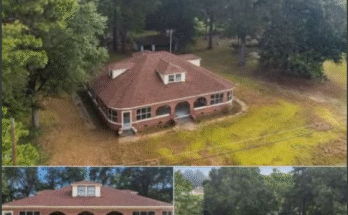The Modern Tiny Home Revolution: Redefining the Meaning of Home, Freedom, and Sustainable Living
In a world where bigger once meant better, a quiet revolution is reshaping the way people think about home, success, and happiness. The modern tiny home movement has emerged as both a lifestyle and a statement — one that challenges traditional ideas of ownership, consumption, and sustainability. For many, a tiny home is far more than just a smaller space; it’s a conscious choice to live with purpose, freedom, and harmony with the environment.
The Rise of the Tiny Home Movement
The concept of downsizing is not entirely new, but the modern tiny home revolution gained real traction in the early 2000s, fueled by economic pressures, environmental awareness, and a growing disillusionment with material excess. Following the 2008 housing crisis, many individuals began questioning the wisdom of living paycheck to paycheck just to maintain large, debt-laden homes. Out of necessity and creativity, a new vision of living emerged — one where less truly became more.
Social media and television shows such as Tiny House Nation and Living Big in a Tiny House amplified this movement, bringing it into the mainstream. What began as an experiment for minimalists soon became a global trend. From urban professionals seeking financial freedom to retirees desiring a simpler life, people from all walks of life have embraced tiny living as a viable, even desirable, lifestyle.
Redefining the Meaning of Home
Traditional housing often equates home with square footage — large living rooms, extra bedrooms, sprawling lawns. But for tiny homeowners, space is reimagined. A home becomes not about how much you own but how well your environment supports your needs and values.
A typical tiny home ranges from 100 to 400 square feet, yet clever design and multipurpose furniture make these spaces feel open, functional, and cozy. Loft beds, hidden storage, and convertible tables are staples of the tiny home aesthetic. Every inch serves a purpose.
More importantly, living in a tiny home fosters a deeper connection to one’s surroundings. Many tiny homeowners report feeling closer to nature and more mindful in their daily lives. Without the distractions of excess possessions, they rediscover simple joys — cooking, reading, gardening, or simply enjoying a sunrise through a large window.
Financial Freedom and Flexibility
One of the most compelling aspects of the tiny home movement is financial liberation. In an age of rising rent and mortgage costs, tiny homes offer an alternative path to homeownership that doesn’t involve decades of debt.
Building a tiny home can cost anywhere from $30,000 to $100,000, depending on materials, customization, and location — a fraction of what traditional homes require. Many owners build their homes themselves, learning valuable skills in carpentry, plumbing, and design.
Without the burden of heavy mortgage payments, people can focus on what truly matters to them: travel, creative pursuits, or simply more time with family. A smaller home often means lower utility bills, reduced maintenance, and fewer possessions — all of which translate to less stress and more freedom.
Some even take their homes on the road. With the rise of mobile tiny homes on wheels, digital nomads and adventure seekers can live wherever they choose, blending modern convenience with boundless mobility.
Sustainability and Environmental Impact
At the heart of the tiny home revolution is a deep respect for the planet. Tiny homes inherently consume fewer resources to build and maintain. Their small size means less lumber, less concrete, and reduced energy usage. Many are powered by solar panels, utilize composting toilets, and feature rainwater collection systems, minimizing ecological footprints.
Moreover, tiny living encourages mindful consumption. When space is limited, every purchase must be intentional. This naturally reduces waste and fosters sustainable habits. In a world grappling with climate change, overconsumption, and urban sprawl, the tiny home movement represents a step toward environmental responsibility and self-reliance.
Challenges and Realities
Despite its many advantages, tiny living is not without challenges. Zoning laws and building codes in many regions still favor traditional housing models, making it difficult to legally place or register a tiny home. Some owners find themselves in legal gray areas, relying on RV or accessory dwelling unit (ADU) regulations.
Additionally, downsizing can be emotionally difficult. Letting go of personal belongings — especially items tied to memories — can feel overwhelming at first. Space constraints can also test relationships; privacy and storage are constant considerations.
However, advocates argue that these challenges are outweighed by the benefits. Many communities across the U.S., Canada, and Europe are adapting zoning rules to accommodate tiny homes, recognizing their role in addressing housing shortages and promoting sustainability.
Community and Connection
Interestingly, the tiny home movement has also sparked a sense of community. Tiny home villages are sprouting up around the world, offering shared resources, gardens, and social spaces. These communities foster collaboration and connection, challenging the isolation often associated with modern urban living.
For example, in Oregon and California, tiny home villages have been developed to provide affordable housing for veterans and low-income residents. In Japan and Scandinavia, compact living is being reimagined as a sophisticated and stylish choice, integrating technology and design innovation.
A Cultural Shift Toward Simplicity
The tiny home revolution mirrors a broader cultural awakening — a desire to live more intentionally and sustainably. In an era dominated by digital overload and consumerism, people are realizing that happiness is not found in accumulation but in experience, freedom, and meaning.
Social media, ironically, has played a key role in spreading this minimalist mindset. Platforms like YouTube and Instagram are filled with tours of beautifully designed small spaces, demonstrating that comfort, aesthetics, and sustainability can coexist. Influencers and architects alike are challenging outdated notions of what “success” looks like.
Tiny homes have also influenced mainstream architecture. The emphasis on multifunctional design, energy efficiency, and minimalist aesthetics is now shaping urban apartments and modular housing developments.
Looking Ahead: The Future of Tiny Living
As housing prices soar and climate challenges intensify, the tiny home movement is poised for continued growth. Governments and developers are beginning to see tiny homes not as a fad but as a practical solution to modern problems — from affordable housing crises to sustainable development goals.
Innovations in 3D printing, prefabrication, and modular construction are making tiny homes more accessible and affordable than ever before. Future designs may incorporate smart home technology, renewable energy integration, and community-based ecosystems that redefine urban living.
Ultimately, the tiny home revolution is about more than just downsizing physical space; it’s about expanding human potential. It invites people to reconsider what they truly need, what brings them joy, and how they can coexist more responsibly with the planet.
In redefining home, we rediscover freedom. In choosing simplicity, we reclaim time and peace of mind. The modern tiny home is not just a shelter — it’s a symbol of a new way of living, one where sustainability, creativity, and purpose take center stage.


